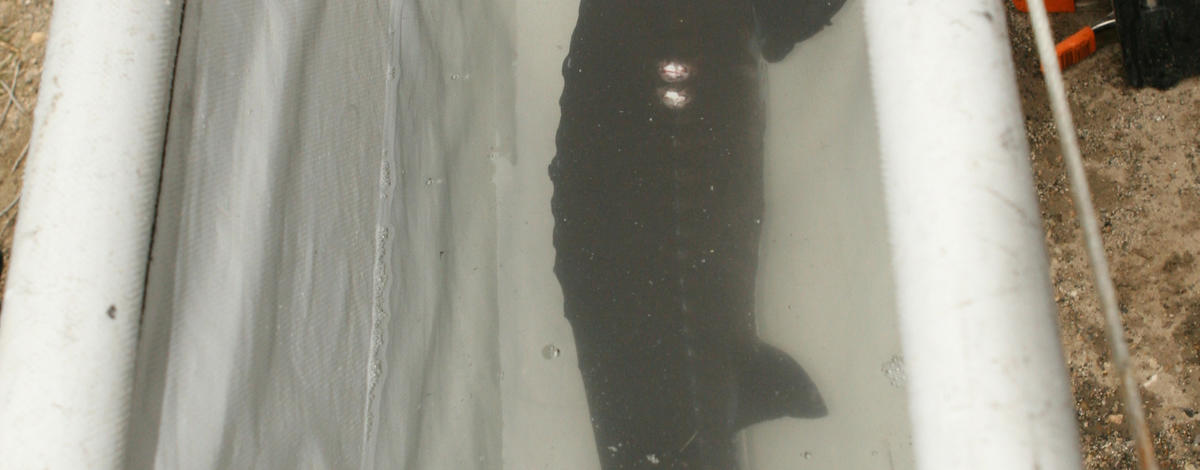Did you know Idaho Department of Fish and Game stocks sturgeon in limited numbers in the Snake River each year? The purpose of the stocking is to maintain a popular and unique fishing opportunity in reaches of the Snake River where sturgeon populations are not self-supporting. It's not like trout stocking where folks get to immediately catch and harvest stocked trout. Sturgeon stocked this year can be around for angler enjoyment potentially for decades.
To preserve genetics, Idaho Fish and Game places priorities on stocking sturgeon as close to a wild origin as possible. Stocked sturgeon are the offspring of wild Snake River White Sturgeon parents. Here begins the somewhat complicated process.
To make it all happen, a lot of partners are involved. First, each year, Idaho Power Company biologists collect and transport ripe male and female sturgeon. It's not an easy task since many sturgeon need to be captured in order to find just a few sturgeon ready to spawn. Ripe males and females are then transported to the College of Southern Idaho Hatchery in Twin Falls where they are spawned, and the eggs are hatched and reared until they can again be transferred to Hagerman State Fish Hatchery. The sturgeon will be held and grown for about a year at Hagerman State Hatchery before they reach sizes suitable for stocking.
Sturgeon aren't just stocked and forgot about. Each fish is tagged with a PIT tag that uniquely identifies that individual fish and where it was stocked. Every time that fish is recaptured, biologists can learn more about their survival, growth, and movements. All this information helps improve the stocking program.
Idaho Fish and Game and Idaho Power are also partnering to learn more about stocked sturgeon movements and survival an additional tool. Sonic, or acoustic tags are being implanted in some sturgeon to allow biologists to locate them without having to physically capture them. To do this, the small transmitters are surgically inserted into the fish's body cavity. These transmitters broadcast a unique signal. Biologists detect the transmitters using specialized underwater equipment (called an acoustic receiver). When the receiver detects a signal, it stores the individual's code, date and time of detection.
The acoustic receivers are serviced and maintained by Idaho Power biologists once per month. Two large floats (one red and one white) labeled with “Idaho Power Fisheries Research” are attached to each receiver. This equipment is held in place by heavy anchors, and their placement is important. If you see these floats, PLEASE DO NOT DISTURB this equipment. Information from this study will ensure that future stocking is successful and will help to improve sturgeon fishing. Your cooperation is appreciated!

